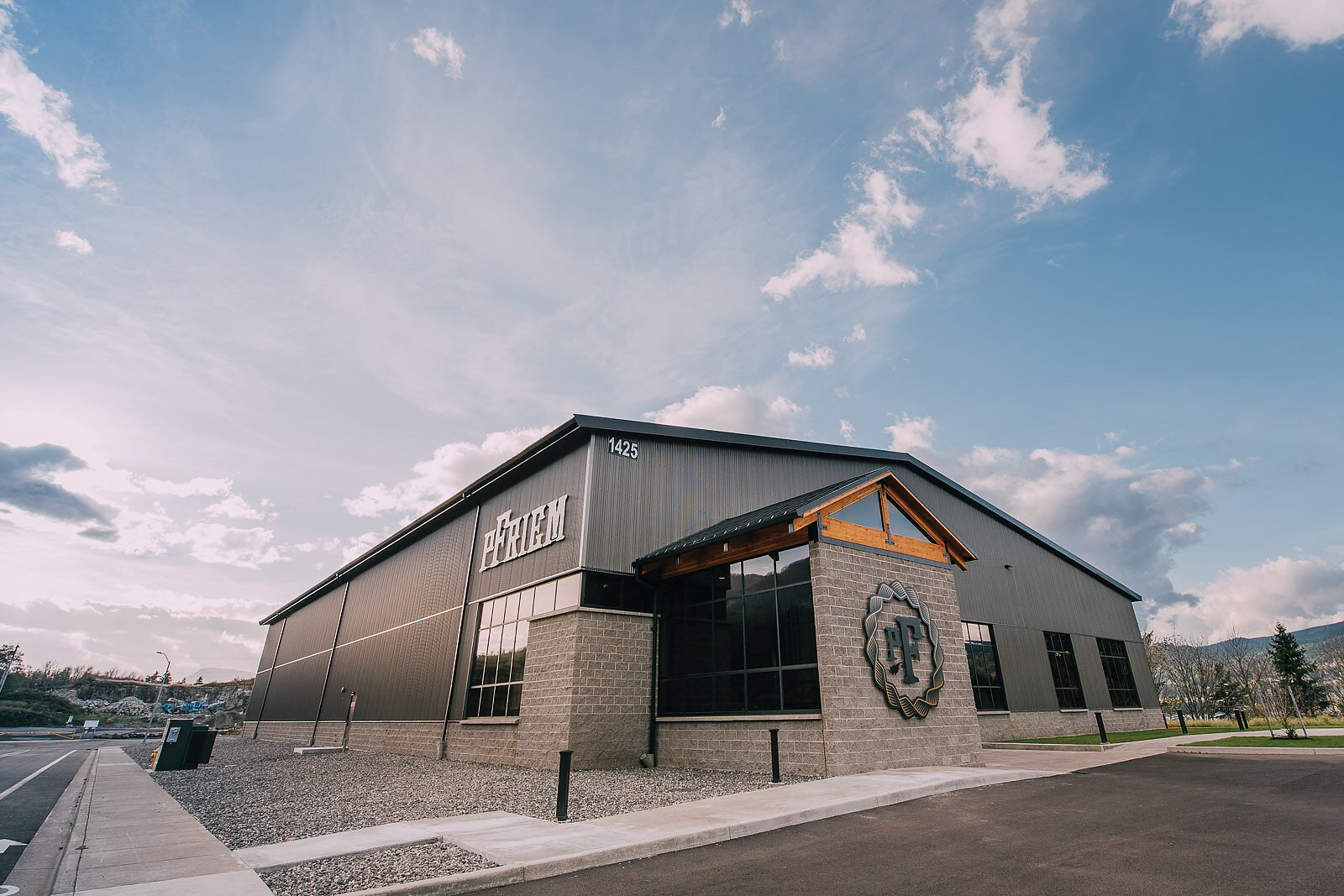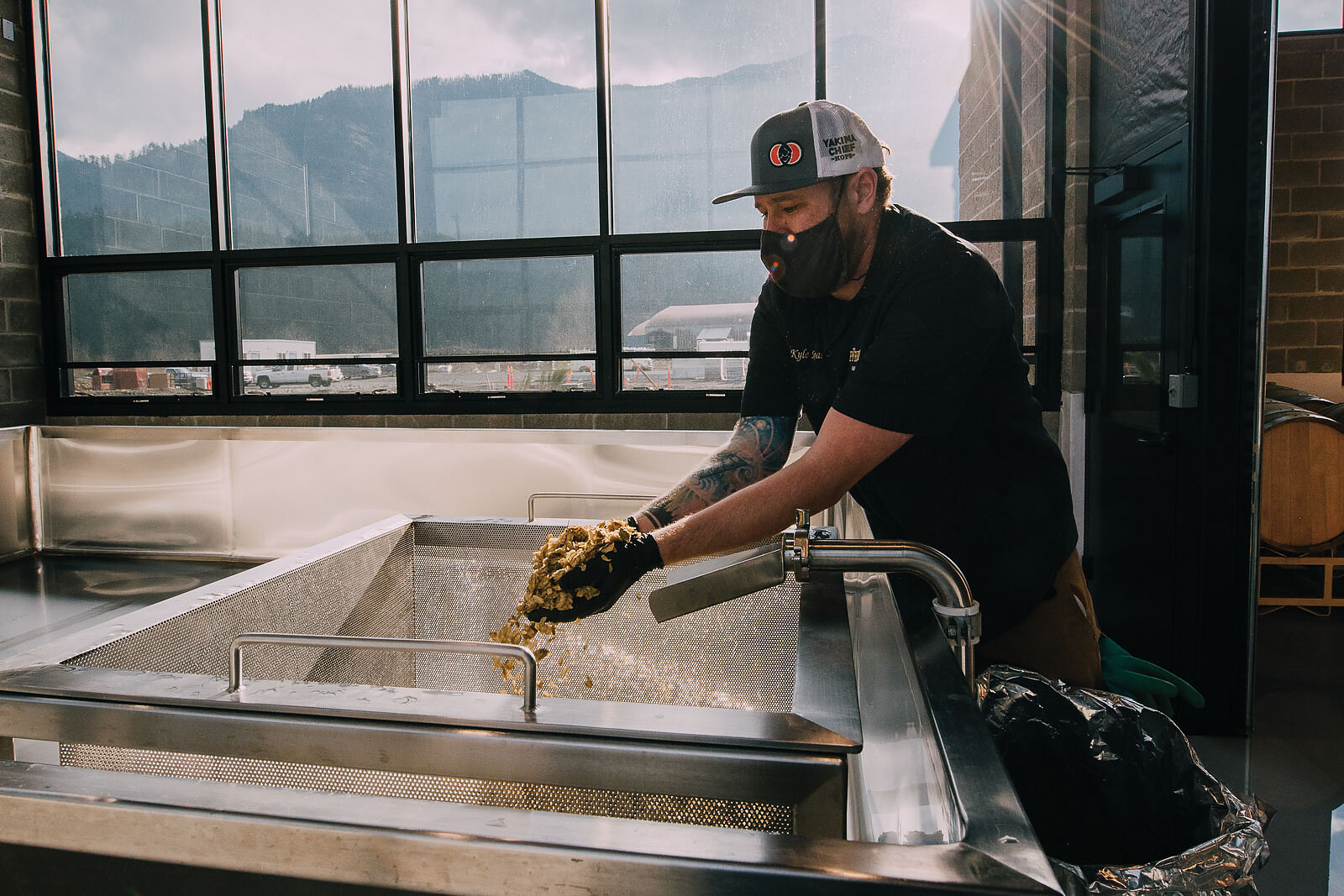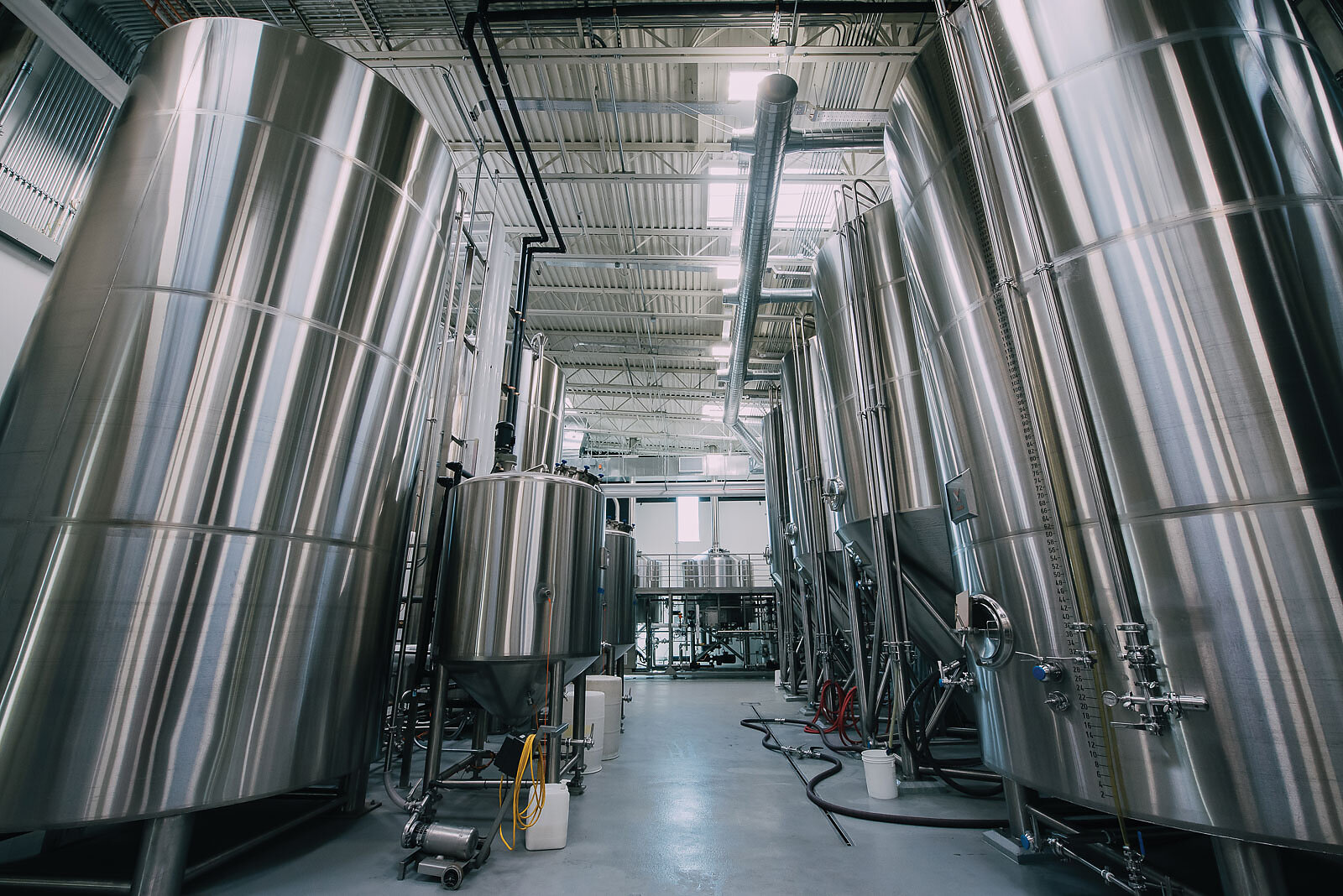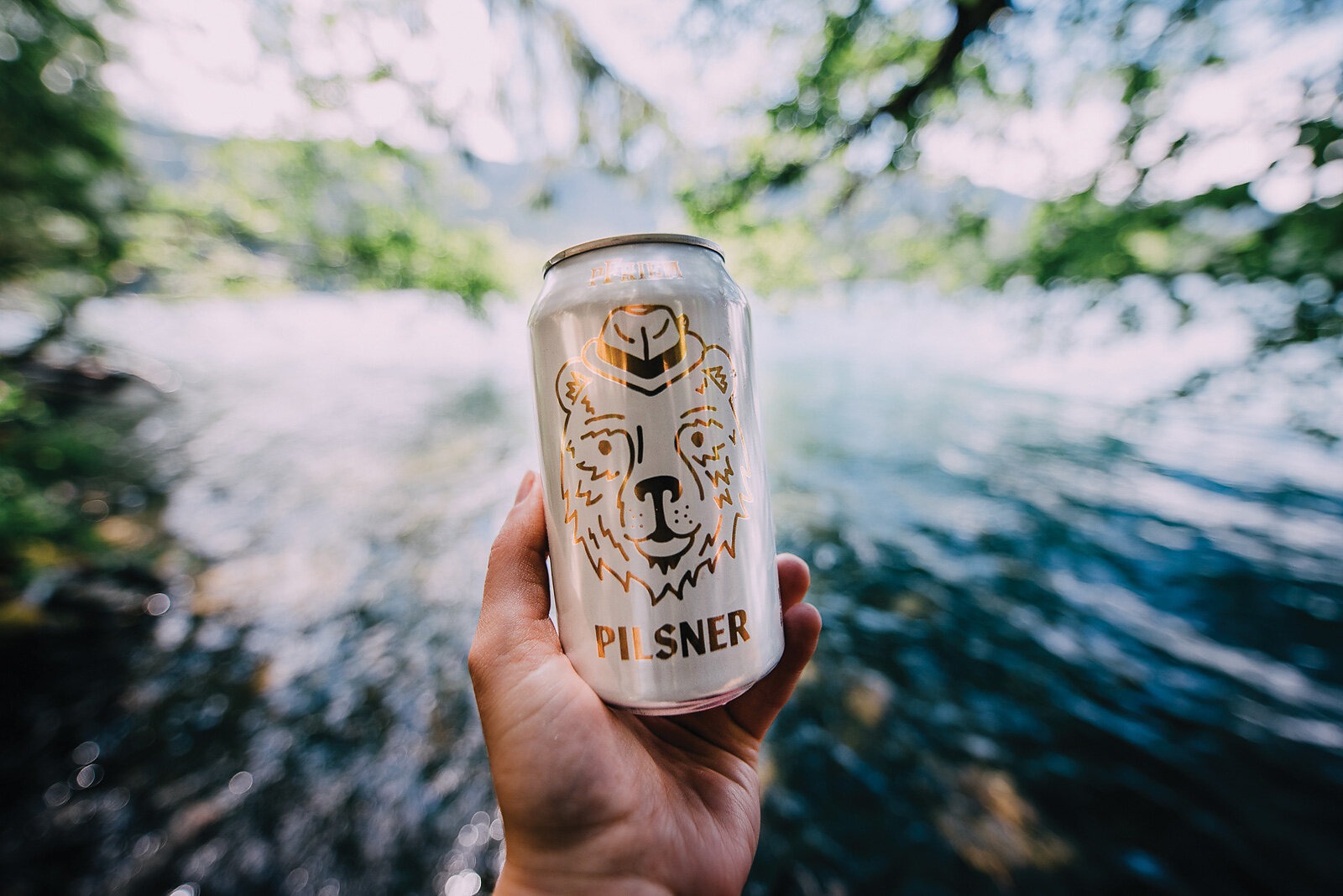
Brewing Community: Josh Pfriem Josh Pfriem Reflects on the Intersection of Beer and Culture
Words by Ian Terry
For pFriem Family Brewers cofounder Josh Pfriem, beer carries much more meaning than just something to sip on. The intersection of beer, family and culture is at the heart of this Hood River-area brewery, which is known for its attention to fine detail and high level of quality across its entire line of craft beers. Read on for a conversation between Josh and Craft MTN.
This interview has been edited for length and clarity.

What was the last beer you drank?
It was a pFriem Mexican Lager. On Sunday I did a super-hot ride and crushed a few after. It was a harsh welcome home to the heatwave hitting Hood River after being up north in Canada for an extended trip with my family.
You spent time brewing in Utah before you came back to the Northwest. Tell us about that experience.
I was ski-bumming down in Utah when I started my brewing career. This was in 2006, 2007. I don’t think most people would think of Utah as the place to go to start their brewing career but, in hindsight, I almost couldn’t have picked a better place. Coming from the Pacific Northwest, at that time it was the beginning of big IPAs and a lot of really edgy, cool, fun flavors. But in Utah it was a 3.2-percent alcohol limit by weight, and 4-percent by volume for draft beer. What that really taught me is that, with 4 percent, you can’t really hide anything in your beer and, to make it really flavorful, you have to put all the right pieces together. It made us huge stewards of clean, refined beer where just a little bit of nuance here and a little bit of nuance there made a difference. It made me a better brewer from understanding this process. Then there’s also the lifestyle aspect too—those beers drink well after a day of snowboarding or skiing or mountain biking. We make over 100 beers at pFriem, but I’m pretty partial to drinking the lower-alcohol, lighter ones.

While living in Utah you took a formative bike trip to Europe with your wife. What was that like?
We were just newly married when we did that. We laugh when we talk about that particular trip just because of how wild it was. We met as mountaineering guides up in British Columbia, so we were partial to planning and doing big things. This was the early days of internet, so most of our information was all from maps, books, hearsay and word-of-mouth connections I had from the beer industry. We packed up our touring bikes and panniers and flew directly into Belgium with a very planned-out itinerary covering most of the country with a couple regions and breweries in mind and a lot of other little stops in between. That allowed us to go see Brussels and the Pajottenland area and understand spontaneously fermented lambic, then on to the West Flanders region and get to know those beers and then down to the Wallonia part of the country, which is more farmhouse-style. We explored the middle part of the country with their abbey ales and even went to a big brewery like Duvel. It was just such a cool blend. During that era that I was in Utah, the American craft brewing scene was growing and there was a lot of excitement, but not a lot of refinement yet. There is this Old World culture in Belgium in particular, but also places like Germany, the Czech Republic, Austria or Slovakia, that was never broken up by prohibition and has hundreds of years of brewing tradition. It was Jen Talley, the brewmaster then at Squatters [in Salt Lake City], who got me into the beer industry and who put me in touch with a bunch of her colleagues in Europe. She told me before the trip, “Josh, this trip is going to change your life and your perspective.” And she was totally right. It broke down for me how good beer could be, how much it can be integrated into culture with food and family, and the nuance of how it integrates with sport and bicycling.
One of the highlight stories from that trip was when we were biking in West Flanders to go visit the town of Watou. We rolled into town all sweaty and late to visit this world-renowned place, ’t Hommelhof, that does really inspiring food and cooking with beer. We asked someone on the street, “Could you let us know where this place is?” The guy said, “Hey, you know, it’s a nice place, I’m friends with the owners and you guys have been biking all day and you should probably shower. I’ll tell you what, if you wait until tomorrow, I’ll take you there with my family.” We stayed at the St.Bernardus Brewery and the next day met up with Stefan and his family. He had this amazing pack family—at that time my wife Annie and I had one kiddo and we weren’t sure if we were going to have another. But we had an amazing time at dinner with this family and they connected us with the brewmaster of a brewery they lived by the next day who I spent the whole day with. It was just an incredible experience and after that we realized we wanted to have another kid, to have more of like a pack in our family. Later on we had a son and we named him Watou after that town and that experience. It was a life-changing and pivotal trip, I’m incredibly grateful for it.

pFriem Family Brewers draws inspiration from two very distinct regions of beer culture—the Pacific Northwest and mainland Europe. How do you meld those different styles together?
It’s threading the needle. What we’ve done, I’d say, is look at the historical perspective of a beer, and that can be something young like in the Pacific Northwest or very old like a German lager or some of the Belgian monastery beers, and then take it into the pFriem lens— how we like to appreciate those beers and what we have to offer them. Our pFriem Pilsner, for example, takes a huge pull from the great Bavarian- style pilsners, but we’re using a good chunk of high-quality grain and malted barley from British Columbia that’s German influenced. We do bring over some pilsner malt from Germany and the hops are all grown in Germany, but I would say we make that a little bit more floral, more bouquet, than what you would find there because, in the Pacific Northwest, we love hops and we want a little more of a wallop of flavor. Ultimately, it’s about pulling from different realms. We’re enjoying these beers in the Pacific Northwest—99 percent of what we produce is sold in Oregon and Washington—and so we know what people are doing when they’re drinking these beers, whether they’re getting done with a mountain bike ride, skiing, hiking, flyfishing or whatever type of après experience. We really try to thread that needle of lifestyle and flavors. To the cultural heritage of each, we try and bring something new and unique rather than just like a copy-and-paste version—a new experience that we think people are looking for.

What does the future of pFriem look like?
More of what we’ve been doing and what we’ve been building. We will celebrate being in business for 10 years next week, which is an exciting milestone for us. We looked at what we were trying to build early on with more of this legacy company that was giving something that people could touch and feel and be proud of and want to enjoy. I always say, you know when we opened up in 2012 people were not exactly dying of thirst— there was plenty of beer out there. What we wanted to offer was this elevated experience and to really have world-class aspirations in everything we do. We want to make world-class beer but also have everything else that’s part of the company also live up to that mantra, from our employees, our families, our brand, our tasting room experience, our relationship with our distributors, our retailers and also to our customers. And we want to do it in a way that isn’t just a small thing that only select people can get their hands on—it should be accessible.
Now we’re one of the top 10 largest breweries in the Pacific Northwest and we’re making a diverse amount of beer with a very high quality and high consistency rate. As we grow, it’s going to be about figuring out what type of environmental impacts we can make as a company. You know, asking what are other things we can do not just to make a great company but to improve the Gorge and the Pacific Northwest as a whole. What type of other humanitarian efforts can we contribute to? We’re proud of what we’ve built and are enjoying it. We want to be a good steward of where we come from too.